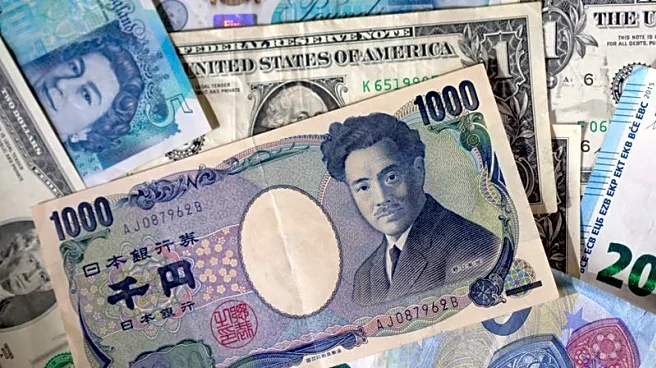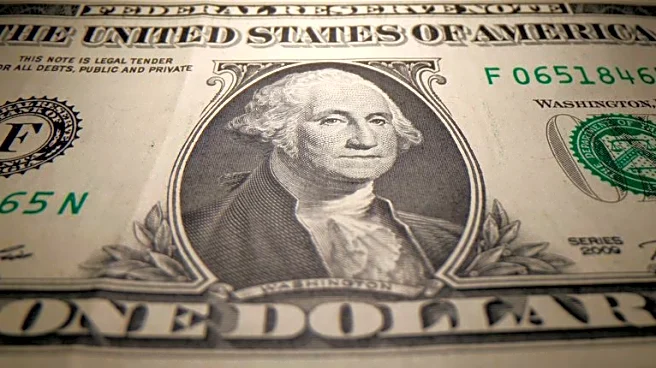What's Happening?
Gold prices have fallen over 1% due to a stronger dollar and reduced expectations of a U.S. interest rate cut next month. This shift follows hawkish comments from Federal Reserve officials, including Vice
Chair Philip Jefferson, who emphasized the need to 'proceed slowly' with further rate cuts. Traders are now pricing in a 41% probability of a 25-basis-point rate cut in December, down from more than 60% last week, according to the CME FedWatch tool. The market is experiencing volatility as it anticipates a release of delayed economic data following the reopening of the U.S. government. This data includes September jobs figures and minutes from the Fed's last meeting, where rates were cut by 25 basis points.
Why It's Important?
The Federal Reserve's cautious approach to rate cuts is significant as it influences investor sentiment and market dynamics. Gold, a non-yielding asset, typically thrives in low-interest-rate environments. Reduced expectations for rate cuts have dented optimism for gold, affecting its price. This development also impacts currency markets, as a stronger dollar makes dollar-priced bullion more expensive for holders of other currencies. The Fed's stance could have broader implications for economic policy and financial markets, affecting investment strategies and economic forecasts.
What's Next?
The upcoming release of economic data, including September jobs figures and Fed meeting minutes, will be crucial in shaping market expectations for future rate cuts. Traders and policymakers will closely analyze this data to gauge the Fed's policy path. The Fed's next meeting in December will be a key event, with traders adjusting their bets based on new information. Continued hawkish comments from Fed officials could further reduce expectations for rate cuts, impacting gold prices and broader market sentiment.












